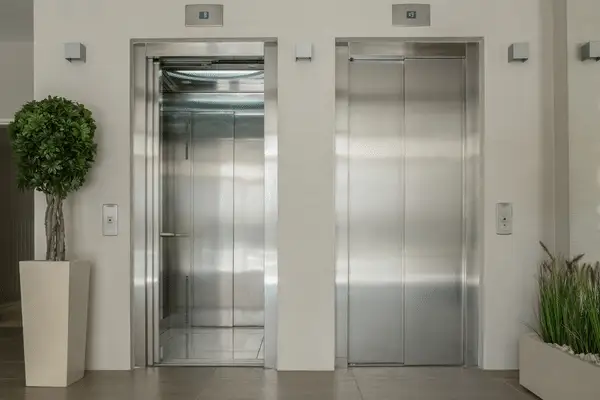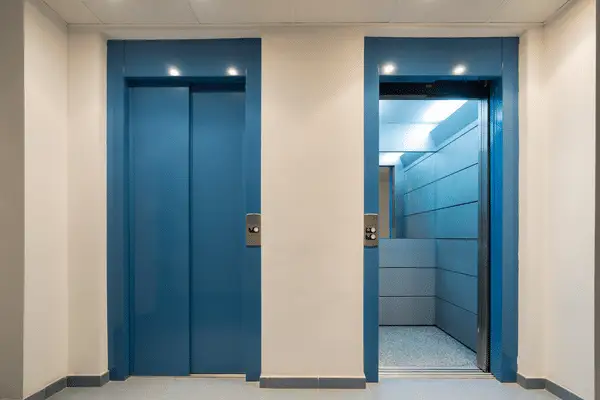How big is a passenger elevator? What are its dimensions? Here are some of the critical factors to consider. Consider your business needs and how many people will be using them daily. A smaller elevator may suffice if the volume of traffic is low. A larger one will be necessary if the volume of traffic is high. You can always choose a smaller elevator if you have limited space. But the key is to consider the number of people using the elevator regularly.
Dimensions of a passenger elevator
The minimum dimensions of a passenger elevator depend on where the doors are placed. The elevator car must be at least 51 inches deep and eighty inches wide, with at least a four-foot shaft depth. The cab must have room to move freely within five to seven feet. Ideally, the cab should be about three-quarters the width of the shaft, which the passenger cannot access.
The dimensions of a passenger elevator can vary widely depending on the type of building and its use. A passenger elevator’s cab should fit within the shaft size to allow enough room for passengers to move up and down the shaft. The exact dimensions depend on the type of elevator but are an excellent guide to understanding which measurements are required in your building. Consider the amount of traffic your elevator will likely receive each day and whether it will have passengers who ride it often.
The width of the wall is also a factor to consider when choosing the correct dimensions. You’ll need to leave enough space to install the elevator’s rail structure and provide clearance for the components. Additionally, most elevators require a machine room, which houses the drive components of the elevator. A typical residential elevator will have dimensions ranging from five feet by four feet three inches to seven and eleven inches wide. If you keep these guidelines in mind, you’ll be well on your way to a great elevator.

Types of passenger elevators
There are several types of passenger elevators. These elevators differ significantly in design, power output, and maintenance requirements. Electric elevators must have potential switches which can be operated manually or powered. These switches will apply a brake to the elevator car in an emergency. Electric elevators must also have emergency switches in each elevator car, which must operate to open the main line switch, separate from the car control circuit wiring.
Electric elevators are generally the most popular. They are easy to install and provide smooth rides. Electric elevators also incorporate programmable controllers and onboard diagnostics. Additionally, the rail length can be extended to allow for future floor additions. These elevators are generally more expensive than hydraulic models. Here are some advantages of each:
The double-deck elevator is a structure with two compartments, one above the other. The drive sheave (also known as the primary drive sheave) is approximately three to fourteen feet wide and is controlled by an authorized operator in a car. Its electric buttons are used to control its speed. Some types are dual-controlled and require an authorized operator to operate them. In addition to carrying people, these elevators can also move materials.

The load capacity of a passenger elevator
A passenger elevator’s rated load is based on the inside net platform area, measured 1000 mm above the floor and exclusive of walls and panels. The maximum inside the net area of the elevator shall not increase more than five per cent for different rated loads. The maximum inside net area depends on the overall building size and purpose. If the elevator is too small or too large, it may fail to move the entire building population.
The weight of a passenger elevator can vary depending on its design and location. In residential buildings, the weight limit of an elevator can be as low as 2,100 pounds, whereas those meant for industrial or commercial buildings can carry much higher weights. The speed and capacity of the elevator are the main factors in its design, and its manufacturer offers a variety of speed options. For more significant buildings, an elevator may have a higher-speed capacity, allowing it to take more passengers at once.
The maximum weight limit of a passenger elevator depends on the type of elevator. Some elevators are designed for single-piece loads, while others are service elevators. Every kind of elevator has its own Elevator Loading Classification. At UBC, most passenger elevators are classified as ‘Loading Class A’. The posted load limit for one person is 25 per cent of the total capacity of the elevator. Unless the elevator is designed to carry a one-piece load, the maximum weight of a single person is 500 pounds.

Service elevator dimensions
The service elevator size is measured by the height, width and length of the cab. The most common sizes are 6 feet wide, 8 feet tall and 10 feet long. The floor area is typically 2,000 square feet or less.
What are the main types of service elevators?
There are two main types of service elevators: electric and hydraulic. Electric elevators are typically used in applications where power is readily available and maintenance can be performed easily, such as office buildings and residential complexes. Hydraulic elevators are usually used in industrial settings that don’t have access to electricity or require more weight capacity than an electric lift can provide. These include warehouses, factories and storage facilities.
Observation elevator dimensions
The design of an observation elevator requires that it meet all requirements of Design Section 3113(a). The hoistway enclosure and counterweight must be constructed of laminated Glass, and the length of the entrance and counterweight enclosures must be 6 inches apart. Glass used in an observation elevator must be of an appropriate thickness to withstand the forces generated by the elevator’s counterweight. The entrance side enclosure should be the same height as the counterweight.
The types of observation elevators available include single and three-dimensional views. The three-dimensional view type has ornamental features and allows a 360-degree observation view, while the single-directional view type is suitable for buildings with a smooth, glossy surface. The single-directional view type can fit into a corner of a building, maximizing the view outside and the interior space. If you’re building has limited space, an observation elevator can be placed at the top or bottom level of the building.

Pneumatic elevator dimensions
There are many limitations to pneumatic passenger elevators, but you should consider their benefits. For example, if you have a building with a relatively short height, a pneumatic elevator is the best option. Its design makes it easy to fit wheelchairs inside, and it requires less space on the floor than an electric elevator. The dimensions of the pneumatic elevator cabin vary, but they are typically 36 inches across and about 43 1/2 inches wide.
These pneumatic vacuum elevators come in different models. The PVE37 is the first pneumatic vacuum elevator model to be distributed internationally. It is the perfect space-saving option since it doesn’t require a large footprint, making it ideal for homes. The PVE37 can accommodate two adults and up to 450 pounds. The interior cabin is 32 inches wide and can handle five stops and 50 feet of travel. If you have a small space, a pneumatic passenger elevator may not be your best option.
A pneumatic elevator has three essential components: the hoist cylinder, made from carbon fibre or clear plastic, and the drive mechanism. A vacuum turbine provides power to the elevator. When it’s on, the elevator car travels at a constant speed and distance without breaking. The elevator car is pushed up and down by reducing air pressure on either side. It can also travel at a higher or lower height, depending on its capacity.
How to choose the right size for your needs?
When it comes to choosing the right-sized passenger elevator for your needs, there are a few things you need to take into account. The first is the amount of space you have available in your building. The second is the number of people who will be using the elevator on a regular basis. And the third is the weight limit that you are comfortable with.
Once you have taken all of these factors into consideration, you can start looking at the different sizes of passenger elevators available on the market. The most important thing to remember is that the size of the elevator should be proportional to the amount of space you have available in your building. If you have a small space, then you should opt for a smaller elevator. And if you have a large space, then you can choose a bigger elevator.
The number of people who will be using the elevator on a regular basis is also an important factor to consider. If you only have a few people using the elevator, then you can probably get away with a smaller size. But if you have a lot of people using the elevator, then you will need to choose a larger size.
Finally, you need to consider the weight limit that you are comfortable with. Passenger elevators come in different sizes, so you need to make sure that the one you choose can handle the weight of all the people who will be using it.
Conclusion
As you can see, there is no definitive answer to the question of how big a passenger elevator is. It all depends on the specific circumstances and requirements of the project. However, we hope that this article has given you a good general idea of the size and capacity of these types of elevators so that you can make an informed decision for your own needs.
